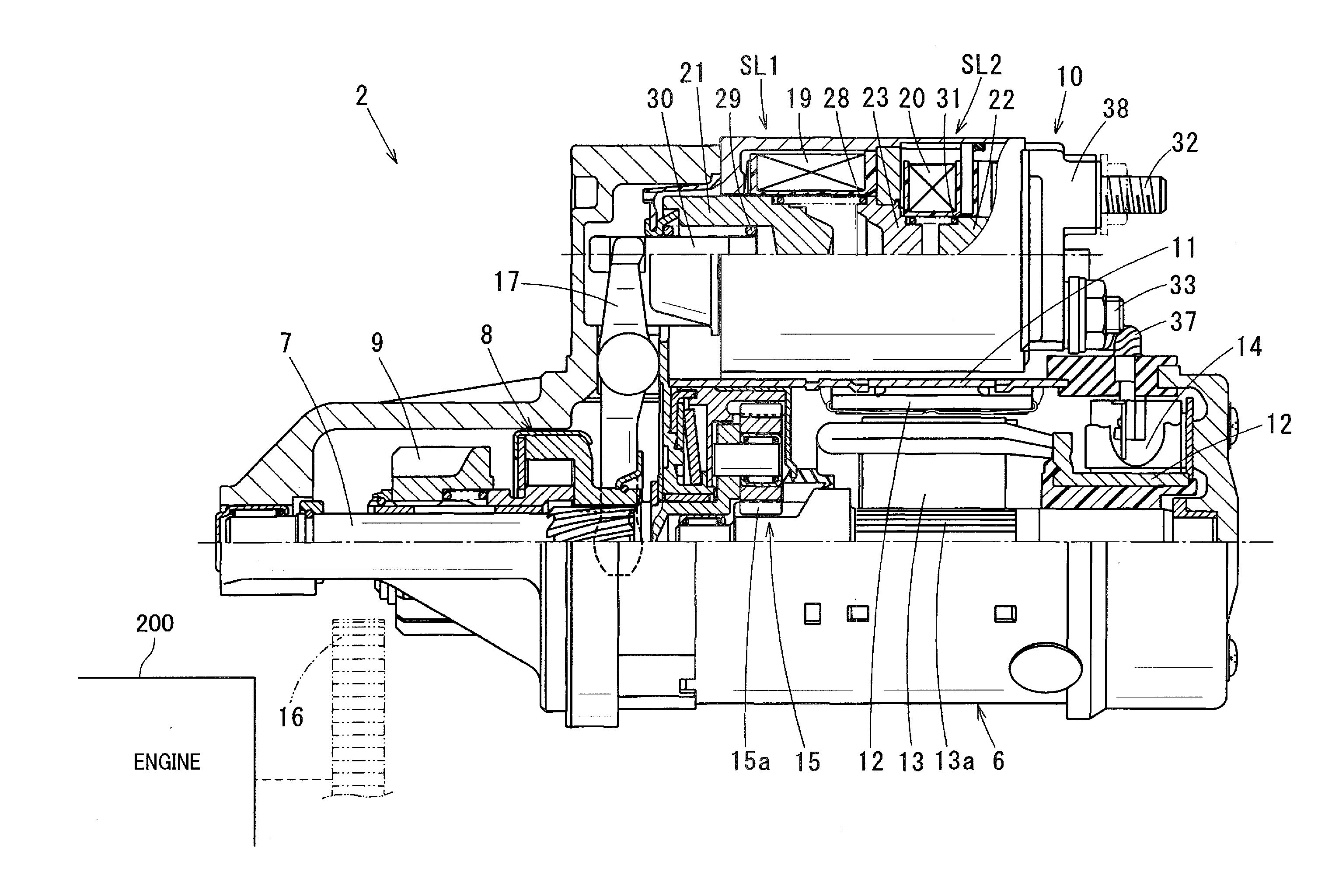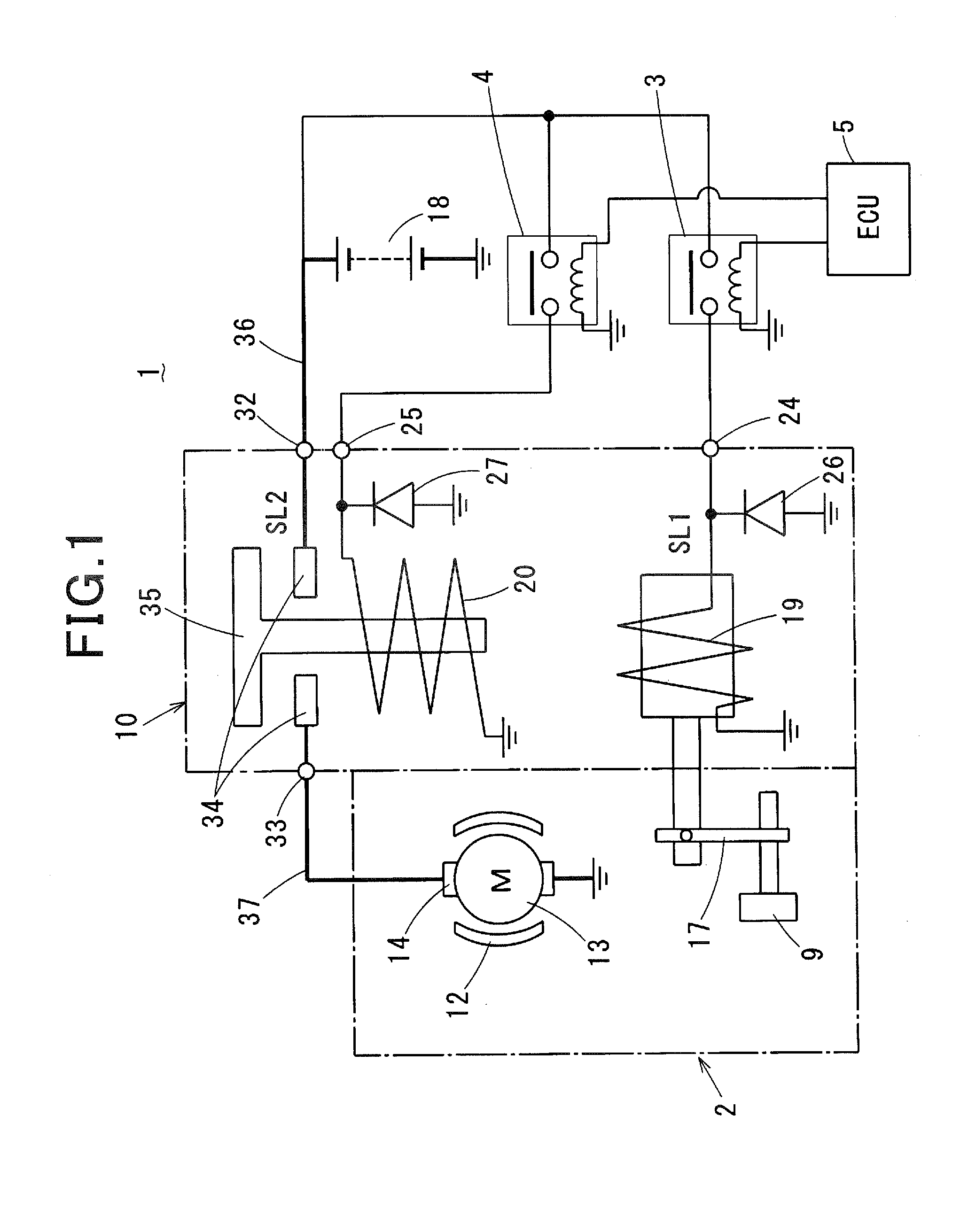Engine starting apparatus
a technology for starting apparatuses and engines, applied in the direction of engine starters, electric motor starters, machines/engines, etc., can solve the problems of tooth hammering noise, tooth hammering noise, vehicle operators' uncomfortable feeling, etc., and achieve the effect of improving the accuracy of analyzing the firing up
- Summary
- Abstract
- Description
- Claims
- Application Information
AI Technical Summary
Benefits of technology
Problems solved by technology
Method used
Image
Examples
first embodiment
[0023]Referring to the drawings, wherein like reference numbers refer to like parts in several views, particularly to FIG. 1, there is shown an engine starting apparatus 1 according to the first embodiment which may be used with an automatic engine restart system designed to automatically restart the engine 200, as illustrated in FIG. 2. The automatic engine restart system, as referred to herein, is engineered to restart the engine 200 after the engine 200 is automatically, manually, or unintentionally stopped and includes an idle stop system (also called an automatic engine stop and restart system) for automotive vehicles.
[0024]The engine starting apparatus 1 includes a starter 2 and a controller 5 which controls an operation of the starter 2 through starter relays 3 and 4. The controller 5 is implemented by an electronic control unit (ECU) and will be referred to as an ECU 5 below.
[0025]The starter 2, as illustrated in FIG. 2, includes an electric motor 6 producing torque, an outp...
second embodiment
[0048]The engine starting apparatus 1 of the second embodiment is engineered as a firing-up determiner to determine that the engine 200 has been fired up when a firing-up condition (which will also be referred to as a second firing-up condition below) in which a rate (i.e., an inclination) of increase in voltage appearing at the terminal (i.e., the terminal bolt 32) of the starter 2 exceeds a given value is met. The terminal voltage at the starter 2 usually changes as a function of a change in current flowing in the motor 6. The determination of whether the engine 200 has been fired up or not may, therefore, be made by monitoring a sharp change in terminal voltage at the starter 2. Other arrangement are identical with those in the first embodiment, and explanation thereof in detail will be omitted here.
third embodiment
[0049]The engine starting apparatus 1 of the third embodiment is engineered as a firing-up determiner to determine that the engine 200 has been fired up when a firing-up condition (which will also be referred to as a third firing-up condition below) in which a rate (i.e., an inclination) of increase in voltage appearing at the terminal of the battery 18 exceeds a given value is met. The terminal voltage at the battery 18 usually changes as a function of a change in current flowing in the motor 6. The determination of whether the engine 200 has been fired up or not may, therefore, be made by monitoring a sharp change in terminal voltage at the battery 18. Other arrangement are identical with those in the first embodiment, and explanation thereof in detail will be omitted here.
[0050]The firing-up determiner (i.e., the ECU 5) may be designed to determine that the engine 200 has been fired up when at least one of the first, second, and third firing-up conditions is met.
PUM
 Login to View More
Login to View More Abstract
Description
Claims
Application Information
 Login to View More
Login to View More - R&D
- Intellectual Property
- Life Sciences
- Materials
- Tech Scout
- Unparalleled Data Quality
- Higher Quality Content
- 60% Fewer Hallucinations
Browse by: Latest US Patents, China's latest patents, Technical Efficacy Thesaurus, Application Domain, Technology Topic, Popular Technical Reports.
© 2025 PatSnap. All rights reserved.Legal|Privacy policy|Modern Slavery Act Transparency Statement|Sitemap|About US| Contact US: help@patsnap.com



